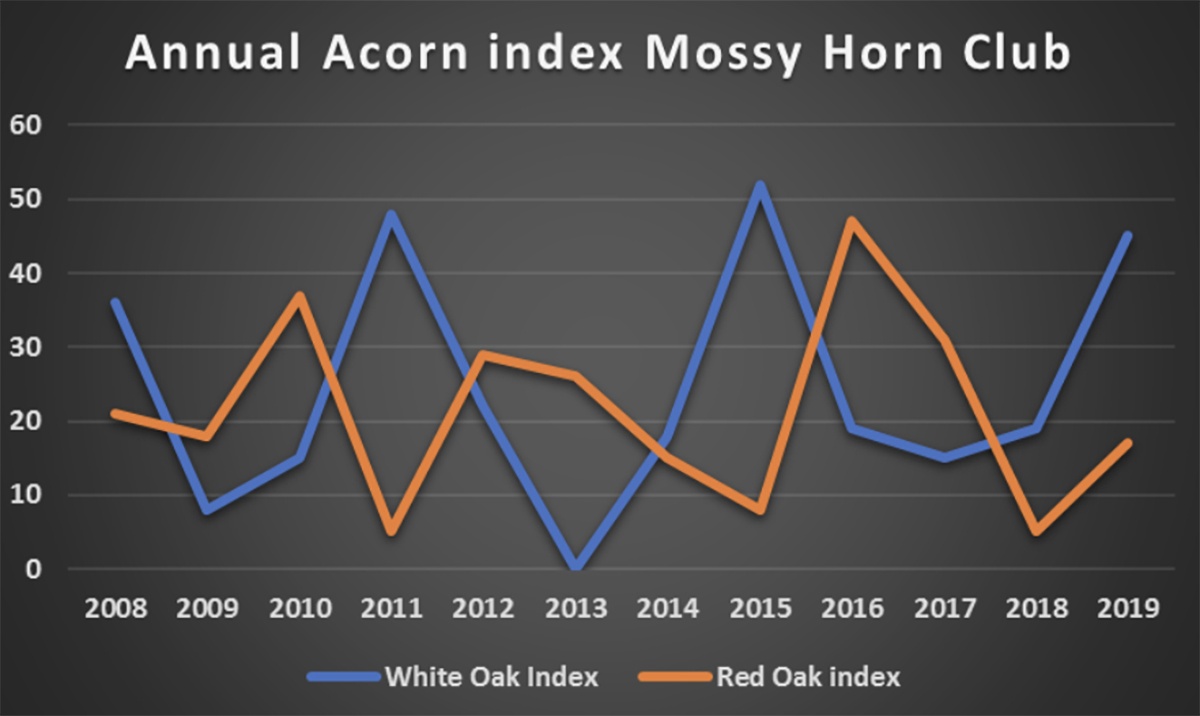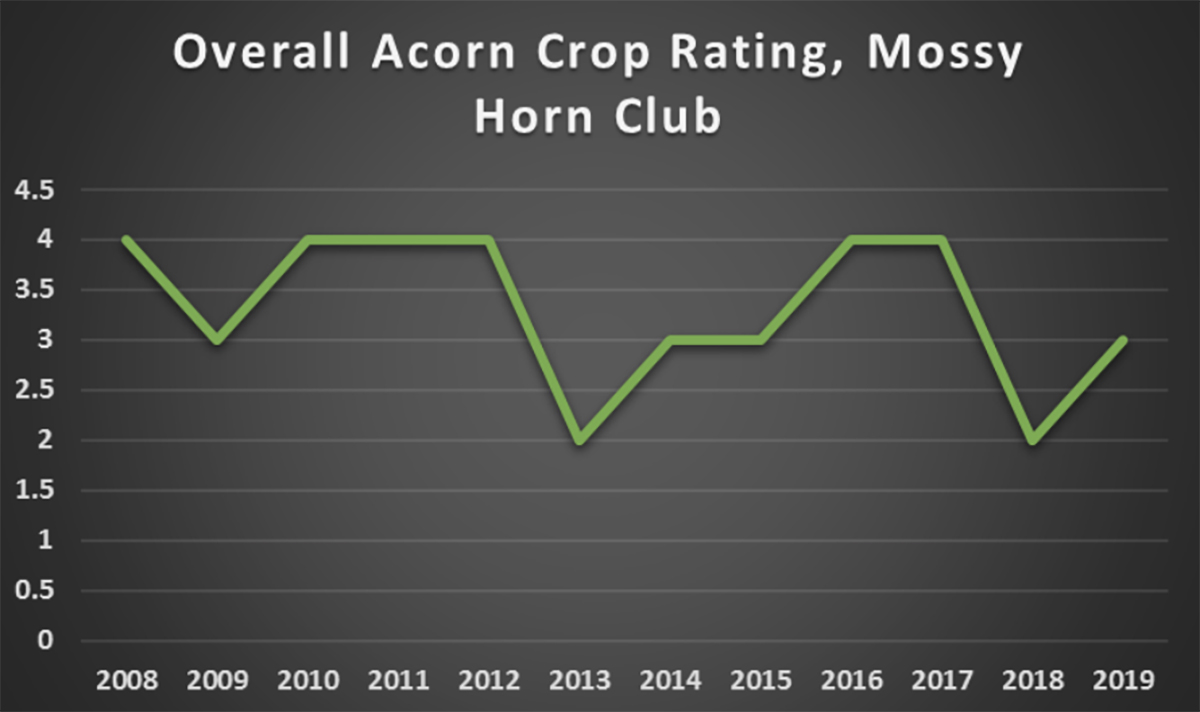As a wildlife biologist, one of the many questions I am asked each year is, “What will the acorn crop be like here?” A smart biologist will reply, “Spotty,” and safe answer for a complex question! The fact is your acorn crop certainly is tied to your general geographic area, but even so, the factors affecting the acorn crop are very site-specific. The acorn crop on your property will be determined by the diversity of oak species, the age of these trees, their condition and health, as well as the density of trees on a per acre basis. Other factors include how many acorns each tree produced last year, as it affects stored resources that influence fruiting. Lastly, weather plays a huge role in determining the current year’s crop. There are two general types of oaks—white and red. The white oak, including the Swamp White Oak, group generally flowers in spring and then produces mature nuts from the flowers the following fall. Red oaks, such as the Northern Red Oak or Southern Red Oak, on the other hand, flower this year, then wait until the next year to mature acorns. So, a late frost this year will probably affect acorn production of white oaks this fall, and red oaks the next year! The key to successful mast (acorns) management is to have a diversity of species among each of the general groups on a per acre basis. The next key is to keep your oak stands thinned so their crowns can expand to full potential If two trees touch their crowns, that means that they are competing for light, water and nutrients!
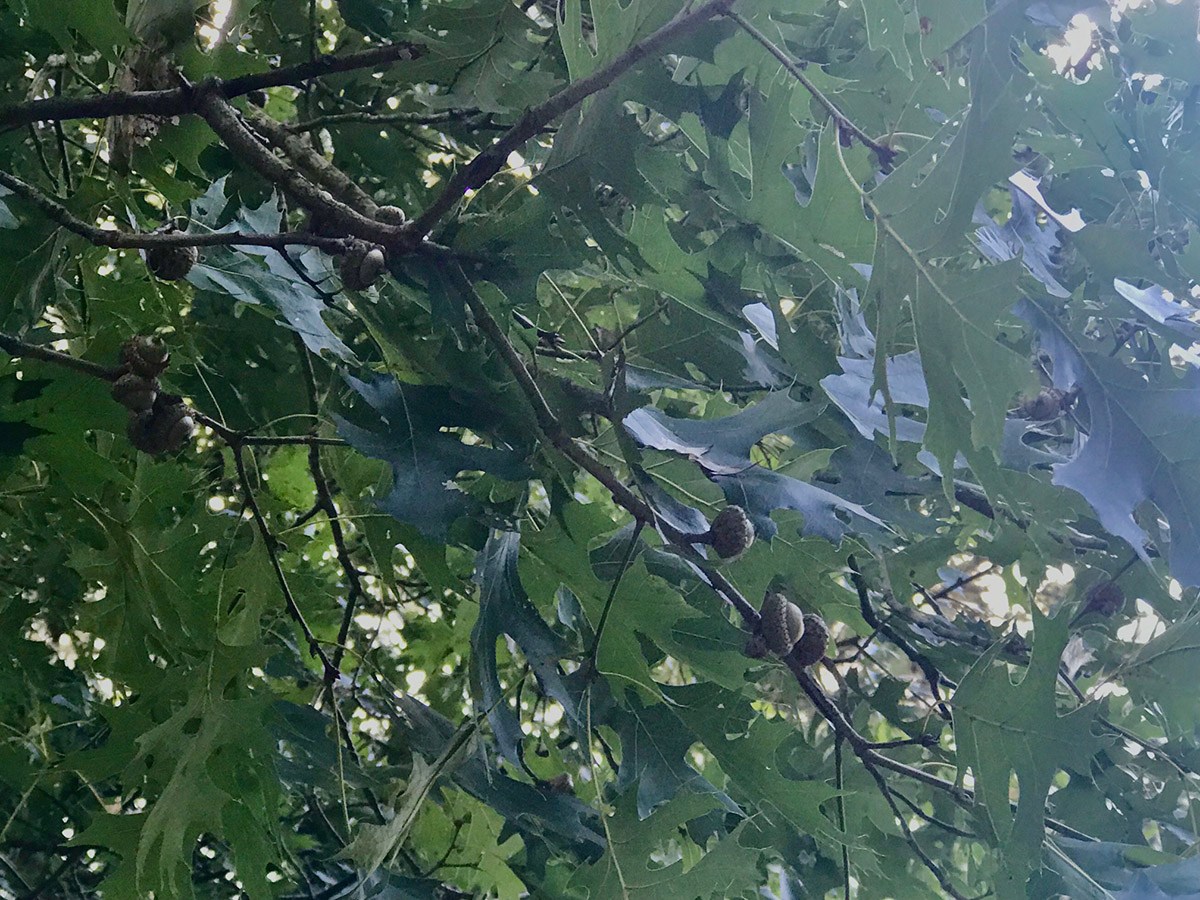
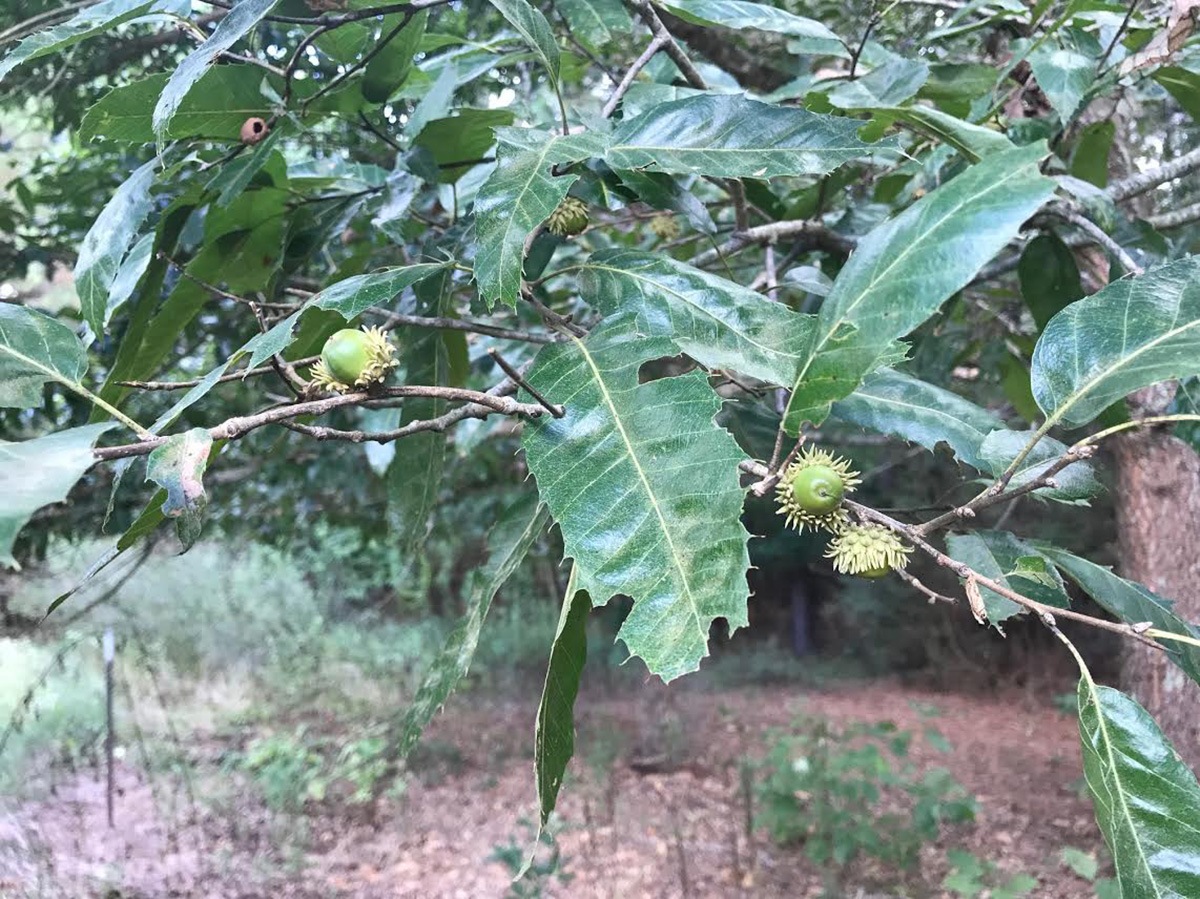
That said, how do you go about assessing what your acorn crop will be this fall? Over the years, we have developed a simple survey technique that has served us well in managing deer and other wildlife. We establish a walking trail through our forests, that is marked on each end so we can return year after year. In mid-summer, we walk the trail, stopping periodically to examine the limbs of trees overhead. We use to methods to quantify the acorn crop. First, we pick random limbs and count the number of acorns on each. A more simple method is to just classify each tree’s crop as: 1. Absent, 2. Light, 3. Moderate, and 4. Heavy. We put the results of each tree examined, along with the trail location into a spreadsheet for analysis and as an archive.
It also is a good idea to return just before fall to sample your trees, since a drought can cause your trees to cast their acorns. This is easily diagnosed as the under-developed acorns will litter the forest floor beneath your trees, and limbs that were heavily stocked with acorns will be devoid of fruit. Over time, you also can record weather data from year to year, and relate acorn crop to these data. You also can identify cyclic production trends in your forest.
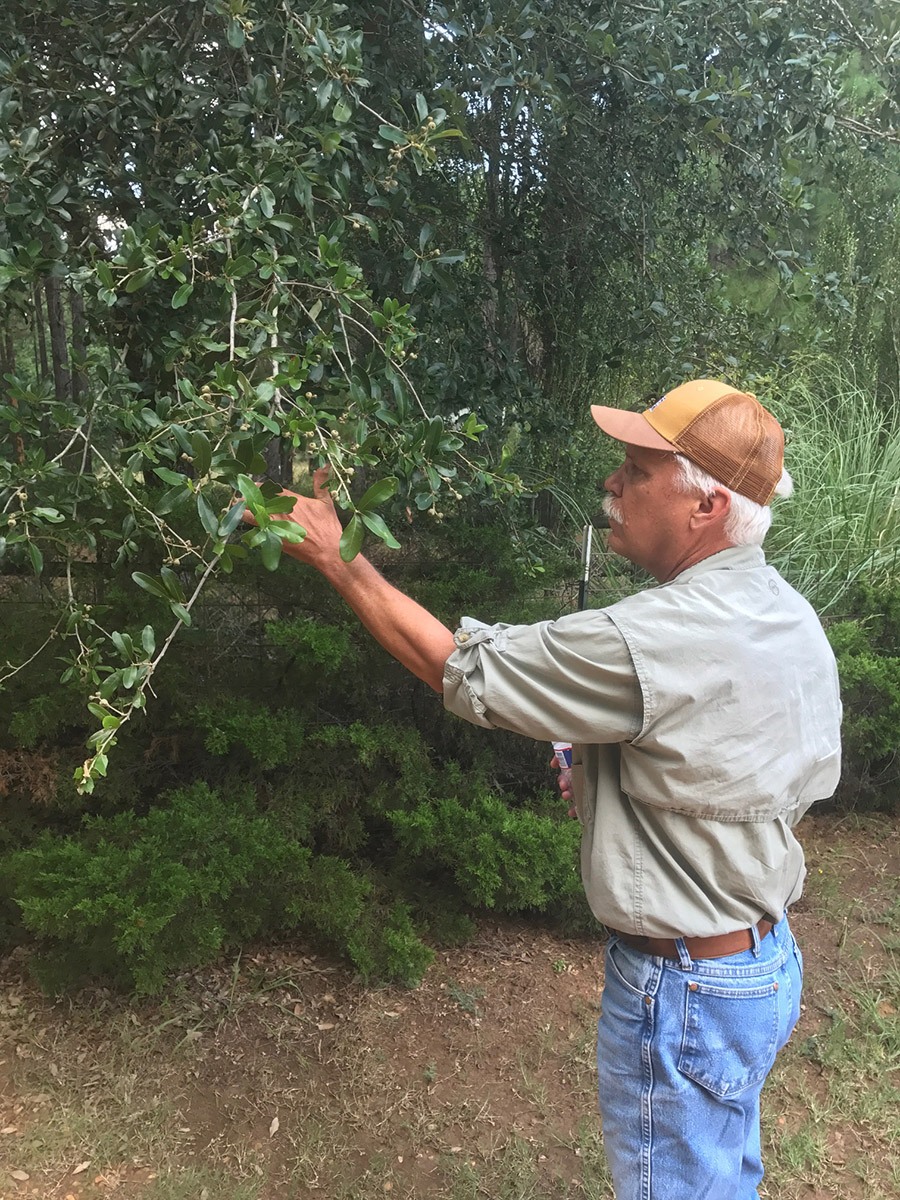
On a final note, not all trees of the same species produce the same amount of acorns in a single year! There is genetic variation and site differences that make one tree a dependable producer, and another a consistent failure. You may consider removing the non-productive trees and planting proven trees from Wildtree.co Nurseries. Lastly, knowing where the oaks with heavy acorn crops lie within your property can greatly improve your chances of bagging a good buck next season. We keep maps of these trees and even devise setup locations for hunting them, often along approaches NOT right underneath them.
